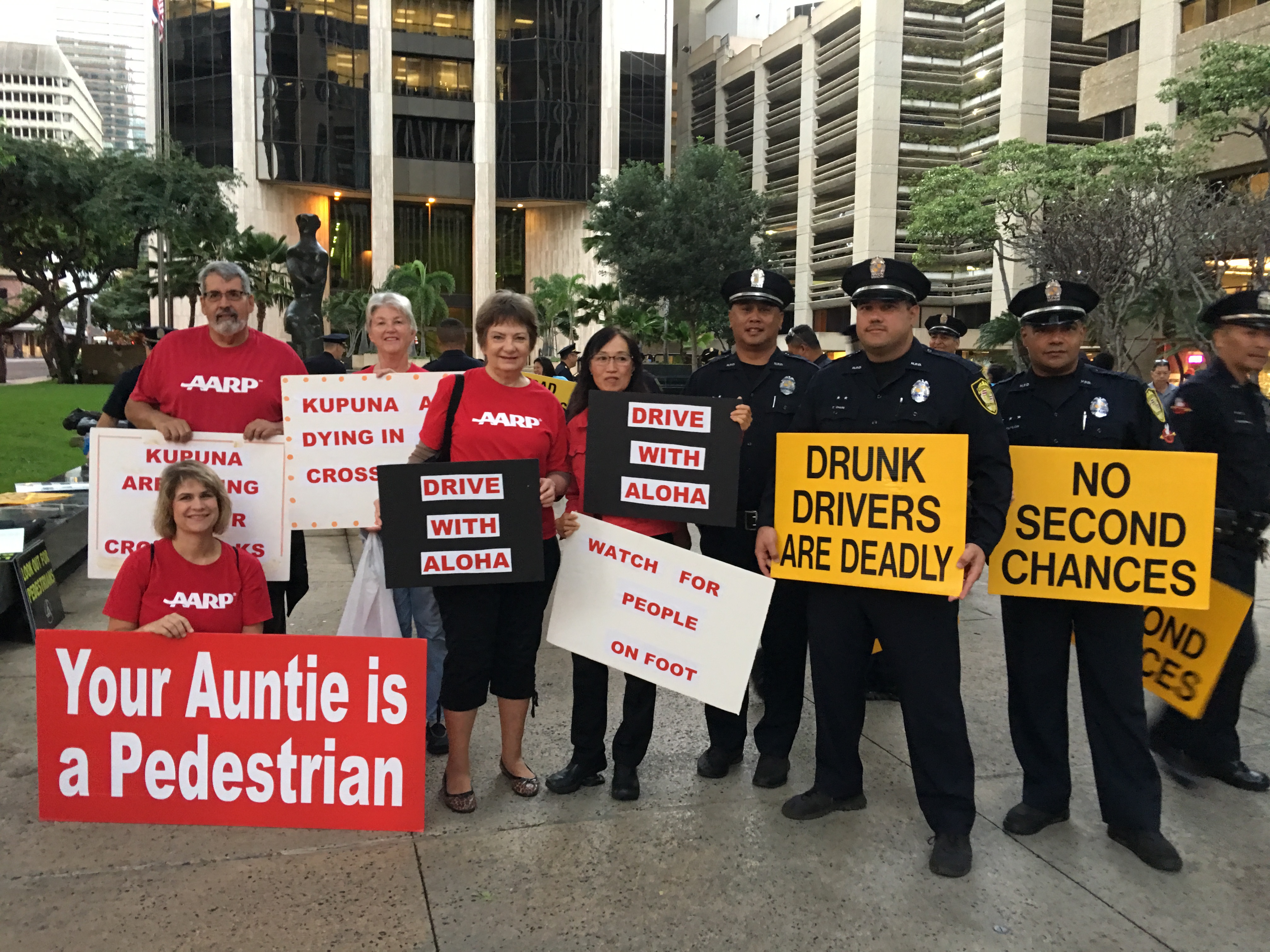AARP Eye Center

Once again, Hawaii ranked as the deadliest state in the nation for people 65 and over who just want to walk across the street.
The latest Dangerous by Design report, released this month, looked at pedestrian deaths from 2005 to 2014 and found that of the 251 pedestrians killed on Hawaii roads, 42 percent were 65 or older. In fact, older residents are more likely to die on the streets of Hawaii than in any other state. Per capita pedestrian deaths of people 65 or older are about 5 per 100,000 here, more than double the national average.
Why are so many dying on Hawaii’s roads?
Unsafe roads due to the condition and design of the roads are a big factor. We have too many older streets with no sidewalks and poor lighting. Many roads are designed for vehicles and not for walkers. It’s too easy to go too fast on some roads.
We also have too many poor drivers who speed or drive while intoxicated. The CDC notes that alcohol or other drugs are factors in about half of all pedestrian deaths.
What can you do to keep yourself safe? Here are some tips from AARP, the CDC and the Pedestrian and Bicycle Information Center:
*Be Seen: Wear bright clothing. Carry a flashlight at night and wear retro-reflective clothing or armbands. Stand clear of buses, hedges, parked cars or other obstacles before crossing so drivers can see you.
*Look, Smile, Wave: Look left, right, and left again and make eye contact with drivers before crossing a street. Don’t rely solely on pedestrian signals and assume vehicles will stop. Look across ALL lanes you must cross and visually clear each lane before proceeding. Even if one motorist stops, do not presume drivers in other lanes can see you and will stop for you.
*Ditch the Distractions: Stay sober. Avoid electronic devices that take your attention off the road.
*Look Before You Step: Obey traffic signals. Cross at marked crosswalks or intersections, rather than mid-block if possible. Walk on sidewalks. If there is no sidewalk, walk facing traffic.
To reduce pedestrian deaths in Hawaii, we need what I call the 3 E’s: Engineering, Education and Enforcement.
Engineering means designing better streets and improving existing roads for pedestrians as well as cars. That means better lighting and visibility, sidewalks, proper crosswalk signal timing and bicycle lanes, as appropriate.
Education for both drivers and pedestrians is needed to be aware of traffic laws.
Enforcement of traffic laws is needed so laws are obeyed. Police must take drunk drivers off the road, catch speeders, and prevent jaywalking.
It’s urgent we take action. By 2030, 1 in 4 people will be over 65. If our streets aren’t safe for them, more people will die.
You shouldn’t have to cross their fingers every time you cross the street.
AARP Hawaii State Director Barbara Kim Stanton began writing a new, monthly column in the Hawaii Herald newspaper. The column -- "Real Possibilities" -- will address a wide range of issues aimed at enhancing the quality of life for all people as they age.































































